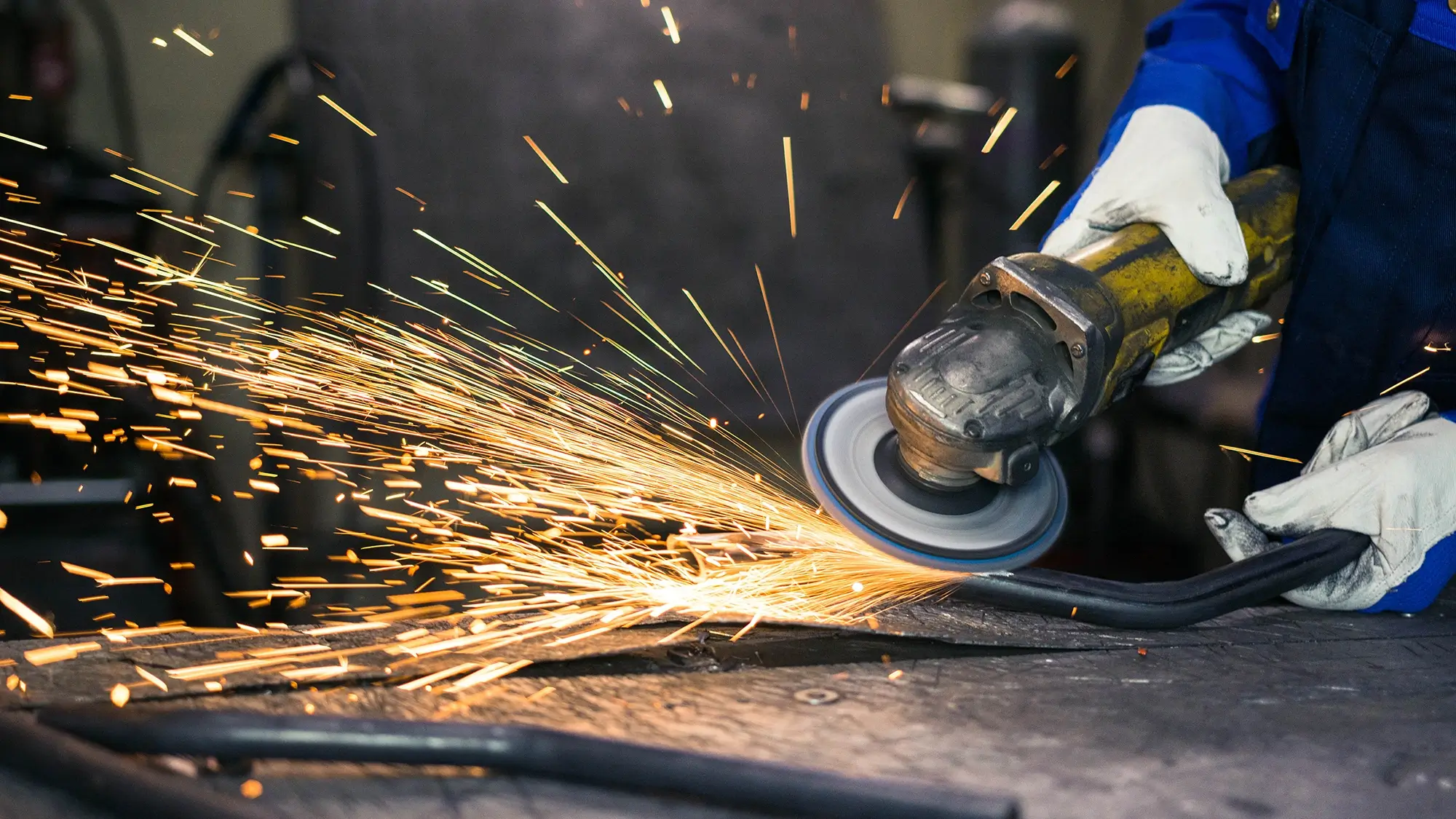If you’re grinding, cutting, or welding metal, you’re creating hot sparks. Those sparks don’t just disappear. They travel with your airflow through the ductwork, and if they reach your dust collector, you may end up with a fire you did not plan for. That’s where a spark arrestor (also called a spark trap) comes in. This is your in-line safety guard, which prevents sparks from reaching your filters and dust collector.
What is a Spark Arrestor?
A spark arrestor is a section of ductwork designed to intercept and cool sparks and hot embers before they reach the dust collector. It sits in line with your duct system, usually upstream of the collector. It works passively, meaning it doesn’t require power, sensors, or controls. It simply uses engineered airflow and internal baffles to disrupt and cool sparks until they burn out.
Here’s one we built that fits most metal and woodworking systems:
Legend Spark Trap
How a Spark Trap Works
- Sparks are created at your machine (grinder, welder, plasma cutter, etc.).
- Those sparks get carried into the ductwork with the airflow.
- Inside the spark trap, the air path changes. The spark is forced to tumble and lose heat.
- Any heavier material or burnt-out particles fall into the cleanout section.
- Cooled spark debris continues to the dust collector safely.
It’s a simple principle: slow the spark down long enough for it to cool.

Why Your Shop Needs One
Metalworking produces both fine dust and hot sparks. That combination can be risky. A spark trap helps prevent:
- Fires inside the collector
- Filter burn holes
- Shutdowns and repair costs
- Safety incidents that nobody wants to explain on Monday morning
A spark trap is not a replacement for good housekeeping or proper dust collection. It’s an added layer of protection that handles the problem where it starts: inside the duct.
What to Look For in a Spark Trap
If you’re choosing one, make sure it has:
- Heavy-gauge steel construction
- A low-pressure drop design (so you don’t lose airflow)
- A cleanout door for easy maintenance
- Compatibility with your duct size and layout
The Legend Spark Trap checks these boxes and is designed to install easily into existing systems.
Flashback Arrestor vs Spark Arrestor (Not the Same Thing)
People sometimes mix these up. A flashback arrestor is placed on your gas welding hoses to prevent the flame from traveling back into the tank. A spark arrestor (also known as a spark trap) is installed in your dust collection ductwork to prevent physical sparks and embers from escaping.
Two different hazards. Two different tools.
Installation and Maintenance
- Install upstream of your collector and reasonably close to the spark source.
- Make sure you can access the cleanout.
- Check it periodically to remove settled debris.
- Keep an eye on pressure drop over time (this is a quick airflow health indicator).
No electronics, no programming. Just reliable mechanical spark control that works while you work.
If you’re running a metal shop, adding a spark trap is one of the most practical fire-safety upgrades you can make. It protects your equipment, reduces downtime, and helps keep your people and facility safe.
If you want help sizing or placing one, we do that every day. See ours here.

.avif)

.webp)
.webp)
